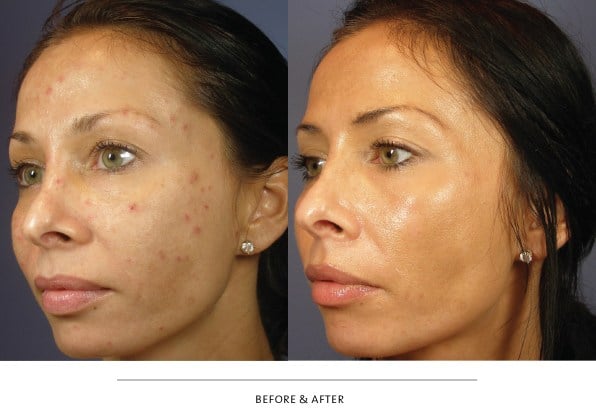Dry Eye
You may be surprised to learn that your tears cover your eye in three distinct layers. The tear film covering the eye is composed of an oily outer or lipid layer, a middle aqueous (water) layer, and a thicker inner mucin layer. Dry eye can occur from an imbalance in this tear film, an eyelid disorder, or from decreased production of tears due to age, medicine, or underlying conditions.

Drying of the eye surface is a major cause of eye irritation, and many people are affected on an ongoing, chronic basis. Patients often describe eye fatigue and heaviness after reading for more than 10 to 15 minutes. Vision becomes blurred and eyes may feel hot and tired. Eyes can feel gritty, itchy, or burn, and be red, dry, or overly sensitive to light. Some patients may even experience episodic tearing in response to chronic eye irritation.
You may experience a desire to close and rest the eyes. Patients often have difficulty opening their eyes in the morning, as if the eyes were glued shut. Others may have difficulty wearing contact lenses, and may even experience dry mouth and sinus ailments. Environmental factors can also trigger dry eyes. Exposure to sun, wind, dry climates, high altitude, smog, air conditioners, hair dryers, ceiling fans, chemicals and cigarette smoke may aggravate the problem.
Artificial tears are a mainstay of treatment for dry eye problems and work immediately to keep the eye well lubricated. Other options may include prescription eye drops such as Restasis, nighttime eye ointment, use of a humidifier, taping the eyelids at night if the eye is exposed, or changing contact lenses or medications that aggravate dry eyes. Supplements such as flax seed oil and omega 3 can help improve the tear film quality to better lubricate the eye.
As our patient, you or your loved one will receive evaluation and treatment by one of our elite oculoplastic surgeons, each with extensive experience in the many causes and treatments of dry eye. Surgical intervention for dry eye begins with temporary closure of tear ducts to prevent tears from leaving the eye through tear drainage channels. Permanent closure may then be recommended. Any eyelid malposition (ectropion or entropion) should also be corrected. If there is facial weakness, partial closure of the eyelid (tarsorrhaphy) may be necessary.
Dry eye may be a side effect of blepharoplasty or any eyelid surgery. It is important for any patient who undergoes eyelid surgery to keep the eye well lubricated during the days before and after surgery to maintain eye health and promote healing.
Most procedures may be performed in an ambulatory surgery center setting. Outpatient (ambulatory) surgery helps to reduce hospital costs, personal expense, and length of stay for patients needing surgery. For those times when surgery is best performed at a hospital, TOC physicians have surgical privileges at all Austin-area hospitals and many ambulatory surgery centers.
We understand that any patient may feel anxious or apprehensive about treatment. Our goal is to help you or your loved one feel at ease.
We engage each patient with sensitivity and respect for his or her individual needs.
If you would like more information about dry eye, e-mail an inquiry to TOC at info@tocaustin.com. You may also schedule a private consultation with a TOC physician.

Natural Results

Dr. Vikram David Durairaj Provider Announcement
HALO at TOC Medical Spa
Are Your Wrinkles Static or Dynamic?



